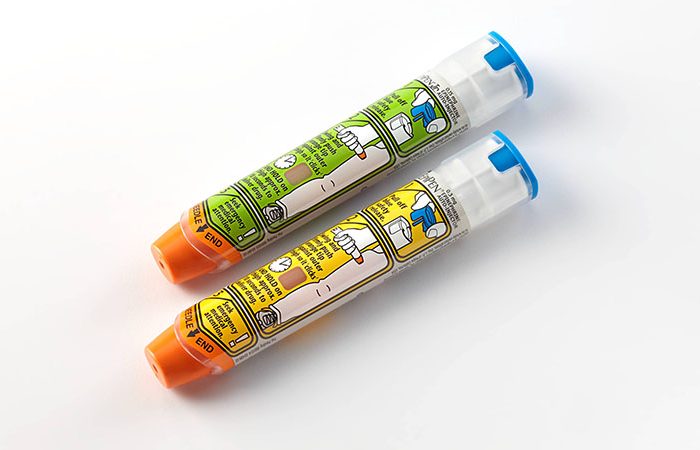
First Aid Focus – Anaphylaxis (allergic reactions)
By Ross Smith (paramedic) Australian First Aid
What is anaphylaxis?
Anaphylaxis is a severe allergic reaction and potentially life threatening. It should always be treated as a medical emergency, requiring immediate treatment. Most cases of anaphylaxis occur after a person with a severe allergy is exposed to the allergen they are allergic to (usually a food, insect or medication).
Mild to Moderate Allergic Reaction
In some cases, anaphylaxis is preceded by signs of a mild to moderate allergic reaction:
- Swelling of the face, lips & eyes
- Hives or welts on the skin
- Tingling mouth
- Stomach pain, vomiting (these are signs of a mild to moderate allergic reaction to most allergens, however, in insect allergy these are signs of anaphylaxis)
Immediate Action
- For insect allergy, flick out the sting if it can be seen (but do not remove ticks)
- Stay with person and call for help
- Give medications if prescribed (whilst antihistamines may be used to treat mild to moderate allergic reactions, if these progress to anaphylaxis then adrenaline is the only suitable medication)
- Locate adrenaline autoinjector if available (instructions are included in the Action Plan for Anaphylaxis which should be stored with the adrenaline autoinjector)
- Contact parent/guardian or other emergency contact.
Anaphylaxis (Severe Allergic Reaction)
Continue to watch for any one of the following signs of anaphylaxis (severe allergic reaction):
- Difficult/noisy breathing
- Swelling of tongue
- Swelling/tightness in throat
- Difficulty talking and/or hoarse voice
- Wheeze or persistent cough
- Persistent dizziness or collapse
- Pale and floppy (in young children)
Urgent Action
- Lay person flat – if breathing is difficult, allow to sit – do not allow them to stand or walk
- Give the adrenaline autoinjector (EpiPen) if available
- Call Ambulance (Telephone 000 or 112 if using a mobile phone)
- If a child attempt to contact parent/guardian or other emergency contact (note emergency first aid comes first)
- Further adrenaline doses may be given (when an additional adrenaline autoinjector is available), if there is no response after 5 minutes
If in doubt, give the EpiPen – Child dose is green, Adult is yellow.
Commence CPR at any time if person is unresponsive and not breathing normally.
If uncertain whether it is asthma or anaphylaxis, give adrenaline autoinjector FIRST, then asthma reliever.
Adrenaline (via EpiPen) is life saving and must be used promptly.
Withholding or delaying the giving of adrenaline can result in deterioration and death.
People with anaphylaxis normally carry an autoinjector such as an EpiPen it is often stored in a soft insulated pencil case type bag.
Reference: allergy.org.au

